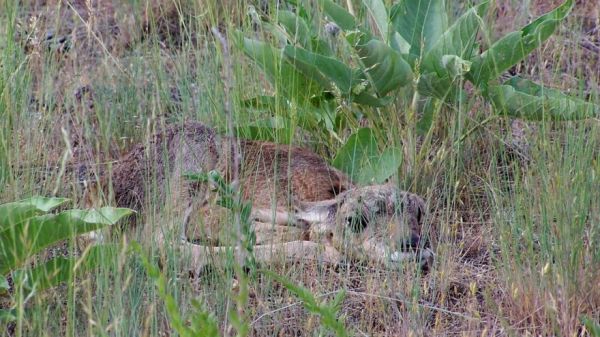
Mammal species are born mostly helpless and vulnerable to predators. Many hide their babies in nests, but pronghorn antelopes are born on the open range, while coyotes wait for an easy snack. And to complicate matters, they always have twins. But Stacey Dunn, who studies pronghorns, tells us that pronghorn fawns are born for camouflage. They are born, they flatten themselves against the ground, and they don’t make a sound. Trying to find them in the grass is not easy for coyotes or humans. And the mother drops each twin in a different location.
Mothers return every three or four hours for nursing, day and night, staying away in between so as not to reveal the babies' location. The coyotes, of course, are watching, tracking the mothers. Over the weeks, the young ones are getting stronger, but when their mothers go, they curl back down, getting quiet again.Hey, your baby would be quiet, too, if his life depended on it! The pronghorn fawns learn to walk and run quickly, but they live on mothers milk for months. Dunn has quite a few pictures of pronghorns hiding in the grass, which you’ll have to study if you’re ever to see them.
Fawns born in April stay quiet till June.
"The technique works," writes Craig. Researchers can see them across a meadow, when the mothers are nursing, but once the baby goes back down to the ground, it vanishes. "I've almost stepped on them without realizing they were there," Stacey told me.

No comments:
Post a Comment